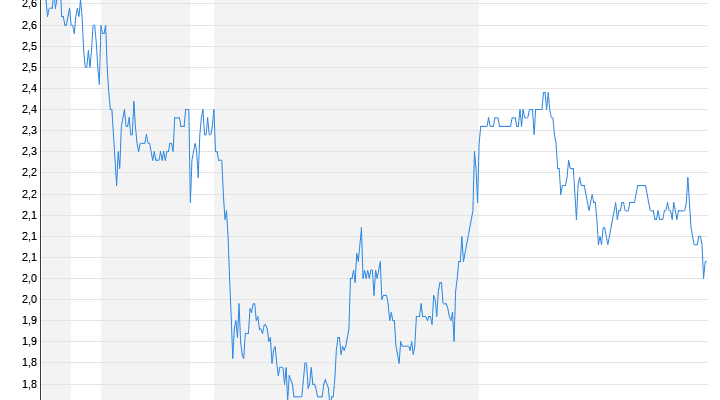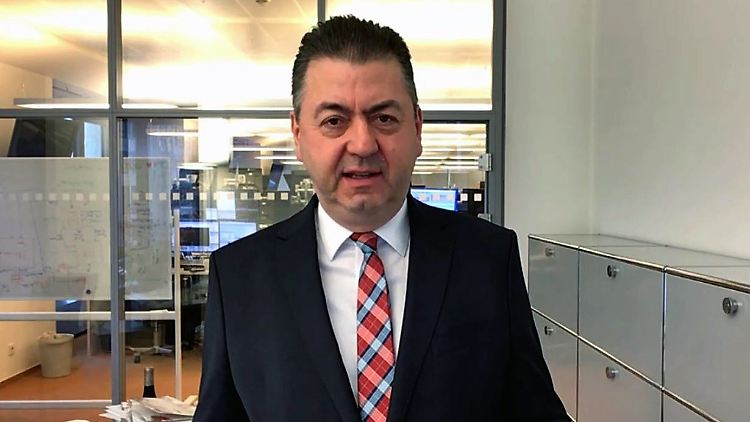The banking earthquake has arrived in Europe. Is this the dreaded Lehman 2.0 moment? Is bank customers’ money still safe? “Rationally, nothing burns,” says the chief analyst at Baader Bank, Robert Halver, ntv.de. “Emotionally”, however, a domino effect with bank runs and bank failures cannot be ruled out. The “first germ of distrust” must be fought. Halver sees the central banks as having an obligation. They should not raise interest rates any further. “We can no longer afford the luxury of consistently fighting inflation.”
ntv.de: After the bank failures in the USA, Crédit Suisse has now come under pressure in Europe. This fuels fears that the banking crisis will spill over from the USA to Europe. Is this the dreaded Lehman 2.0 moment?
Robert Halver: Of course you can compare the whole thing to a domino effect. When the first stone falls, as is now happening in the USA, you have to be careful that the chain doesn’t reach Europe. Otherwise, in the worst case, you will find yourself stuck in a Lehman crisis 2.0. But two things speak against it: First, the European banks are more stable, much more stable than was the case in 2008. Secondly, and this is much more important: The central banks, regardless of whether they are the Fed or the ECB, would be stupid if they allowed the banks to have another liquidity crisis. That means they will stabilize the banks with massive amounts of liquidity.
Who or what triggered this violent turbulence on the financial market in the first place?
We all still have the Lehman bankruptcy in our bones. If there is a bit of smoke somewhere, there is a great fear that there is a fire somewhere. Many investors are playing it safe and getting out of the banks. As a result, the banks are short of money. They try to replace this liquidity by selling their government securities. This in turn inflates the losses of the banks because of the significant price losses of the paper. When banks’ balance sheets are in trouble, we have what we saw in 2008 when the Lehman collapse started the financial crisis. If you let a first banking problem, a first banking or liquidity crisis run, then our financial system is in danger worldwide.
Are there any parallels between US banks and European banks and their problems that justify fears of a domino effect?
No, we have stricter banking supervision than the Americans. We learned a lot after the Lehman bankruptcy in 2008. Banks are in much better shape today. Nothing is rational here. But emotionally, and this is the crucial point, you have to be careful that it doesn’t lead to a wave of bank runs and an international liquidity crisis, even though the banks are actually in a good position.
Who is to blame for this situation, have the banks and their managers failed?
If you’re looking for someone to blame, you’ll find them everywhere: Of course, banking supervision in the US isn’t as strict as it is here. On the other hand, the Silicon Valley Bank’s business model of helping young entrepreneurs in America has been financially attractive. The US Federal Reserve is also to blame. The Fed has made one of the most radical hikes in interest rates since the 1970s. That hurts. Banks can’t cope with that anytime soon.
And the regulators? Should they perhaps have kept a closer eye on the banks during the rate hike phase?
No not at all. Banks are there to take risks. Think about it when building financing is due. Few have the complete equity for it. The bank must be ready for this and take the risk that the borrower may default. Even when it comes to financing companies. We all want infrastructure improvement, climate protection. Risks lurk everywhere here. You can’t regulate banks badly. If German banks no longer take the risk, then American banks, which in case of doubt are regulated more laxly, will take the risk.
According to IFO boss Fuest, the bankruptcy of the Silicon Valley Bank in the USA “definitely” poses a threat to the stability of the global financial system. So there is still a possibility that the situation will escalate?
In principle, 2008 could repeat itself. But the central banks will by no means allow that. If customers want to withdraw cash, the monetary authorities will ensure that they can do so. Friends, acquaintances and family members call me to ask: “Is my money still safe?” Something like this has to be fought at an early stage, because it is the first germ of distrust that is planted and then grows like weeds. On the one hand, the central banks will do this with their rapid reaction force, with their fire brigade, i.e. with a whole fire engine to put out a burning match. And on the other hand, they will adjust their monetary policy. Fighting inflation by raising interest rates sharply, which has made the problems even worse, must no longer take place in this way.
You mentioned the emotionality of the situation. How great is the danger of a self-fulfilling prophecy? In that case, instead of a banking crisis, a crisis of confidence would roll over the financial markets. As a consequence, it would be the same if we see bank runs and busts.
If we allow this small crisis, a small mosquito, to become a giant elephant that tramples on the economy, Europe, financial stability and confidence, then we would have a problem. But that is exactly what the central banks will not allow.
What are the financial markets doing in this mixed situation? We’ve seen extreme outliers this week. The situation now seems to have calmed down. Is the worst behind us?
I assume that the central banks will seize every opportunity to stabilize the whole thing. The nervousness will continue for a long time. But the monetary watchdogs will prevent the worst because it has to be prevented. Otherwise our economic growth and our prosperity will be ruined.
The interest rate decisions of the major central banks are pending again. The financial market turmoil is fueling bets on an interest rate pause, particularly in the US. The Fed still has a week to discuss the situation. Will the monetary authorities put the brakes on their planned rate hikes?
The ECB is likely to continue raising interest rates initially, but with less fervor than was recently planned. Otherwise we have a real problem. The trick will be to explain to the citizens how it all fits together: recently the threat of martial interest rate hikes to combat inflation and now the controlled withdrawal. But they can do that. The central banks can no longer pursue a strict anti-inflation policy because the collateral damage is too great. This also applies to the Fed. I expect another interest rate hike and then, with a view to falling inflation – which is expressly unsatisfactory – people will say that we are on the right track. We can no longer afford the luxury of consistently fighting inflation.
Diana Dittmer spoke to Robert Halver

